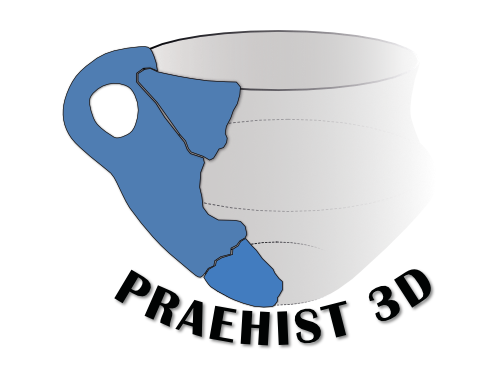One of the first published articles on this blog dealt with the possibilities of representation of digitized pottery. And as I promised a few months ago, here follows a short addendum to the visualization of fragmented vessels.
Original Scan
For the reconstruction of the cup supplements, I have used the scans from the original post. These are, unfortunately, a bit messy, noise, overlaps, fuzzy texture and far from waterproof.
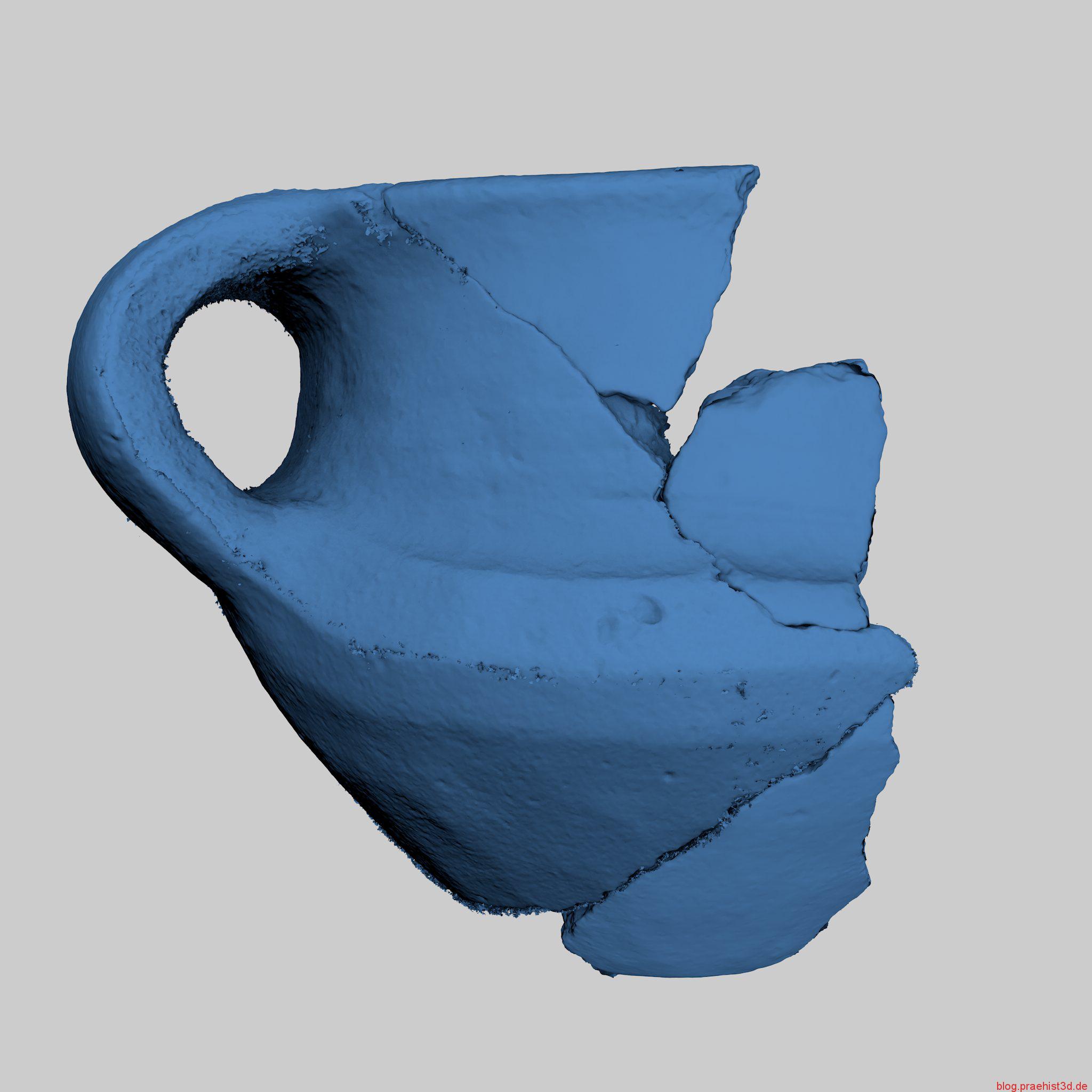
Currently, I just eradicate these errors before a re-evaluation and calculation precisely this ceramic scans. This is probably one of the biggest advantages of photogrammetry as a method. So each object can, as long as the original images are preserved, be redone with newer approaches, software and in my case, more knowledge be reprocessed.
Virtual bonding
The reconstruction and fixing of broken vessels was for me always one of the most fascinating steps in the find processing.
Carefully collect new pieces. Then after a first adaptation of the individual pieces, followed by sticking together with fetid glue and fixing the glued pieces using masking tape and a sandy pool.
Unfortunately, these composite pieces are extremely difficult to package and take a lot of space in the overflowing archives and magazines of the country’s universities and offices. Also, can only really stable ceramics be composed. Once it is relatively fragile due to the preservation conditions in the ground, it tends to break the splices and therefore must not be assembled.
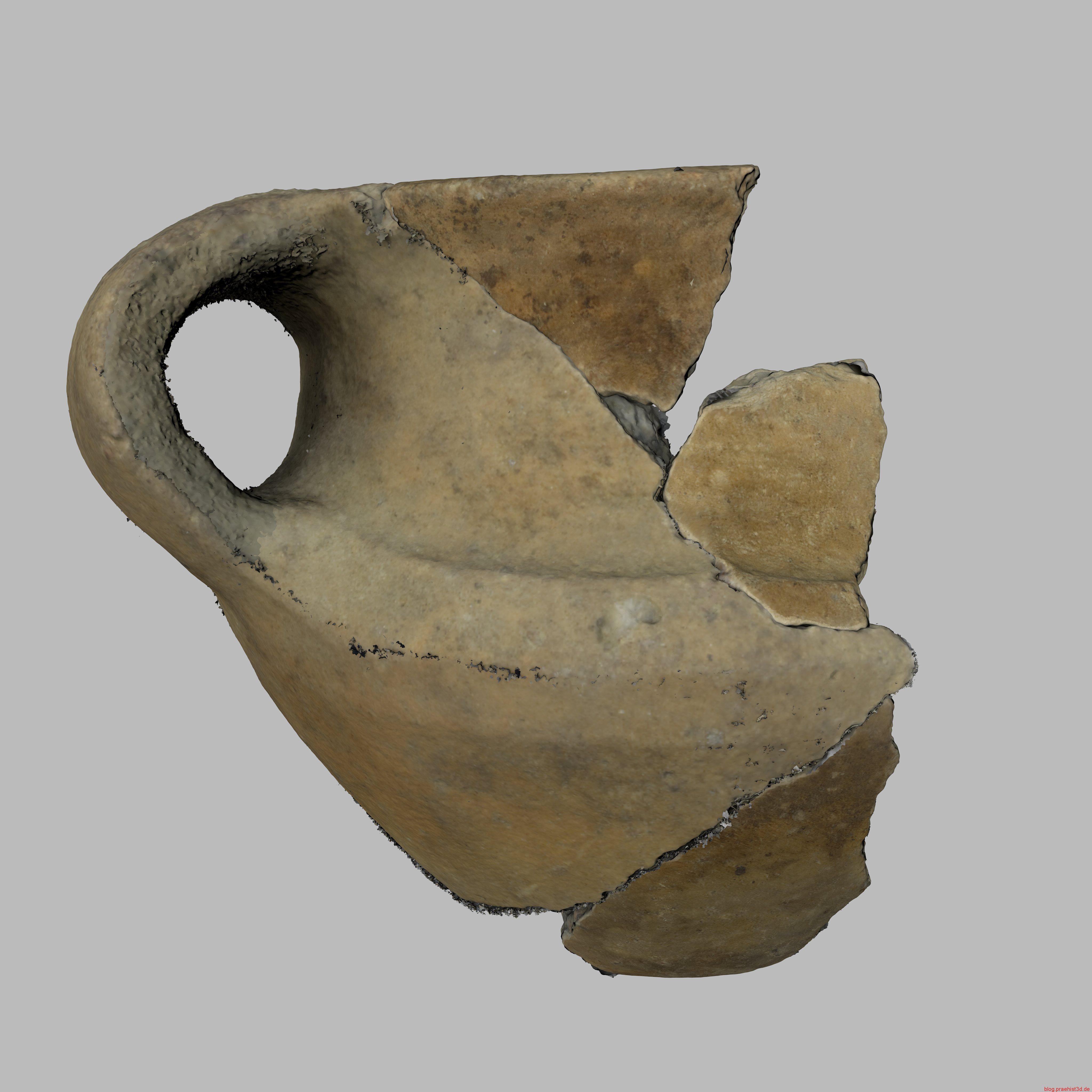
When virtual bonding accounts for many of these hurdles. Because there is no gravity and forces in the 3D software, the pieces can be assembled without any damage by adhesive, improper handling or simple traps to fear. Also, the object is not unstable because of its size and takes up less space in storage. The objects themselves must only be touched and moved for the recording camera. So also extremely porous or fragile shards can be digitized and combined safely later.
But why glue pottery at all?
Besides the pleasure to solving a puzzle that has an unknown number of parts, is never complete and hiding in a thousand different bags, there are crucial reasons for these reconstructions.
By assembling, it is possible to establish links between different findings and features. So it is not uncommon for various ditches in settlements to contain pieces of one and the same vessel. This allows direct conclusions about the dating and interpretation of the individual features.
For the evaluation and typological classification of found vessels, it is important to obtain a complete profile of each vessel or a large as possible decorated surface.
Also, it may be restricted in the excavation regulations that ceramics are put together as much as possible. This speeds up the subsequent reevaluation and increased ability to exhibit individual objects.
Reconstruction of the vessel
The here composed shards resulted in a very thin profile from the top of the cup to the base of the object. The vessel diameter can be determined by the mouth diameter of the resulting edge on the top side.
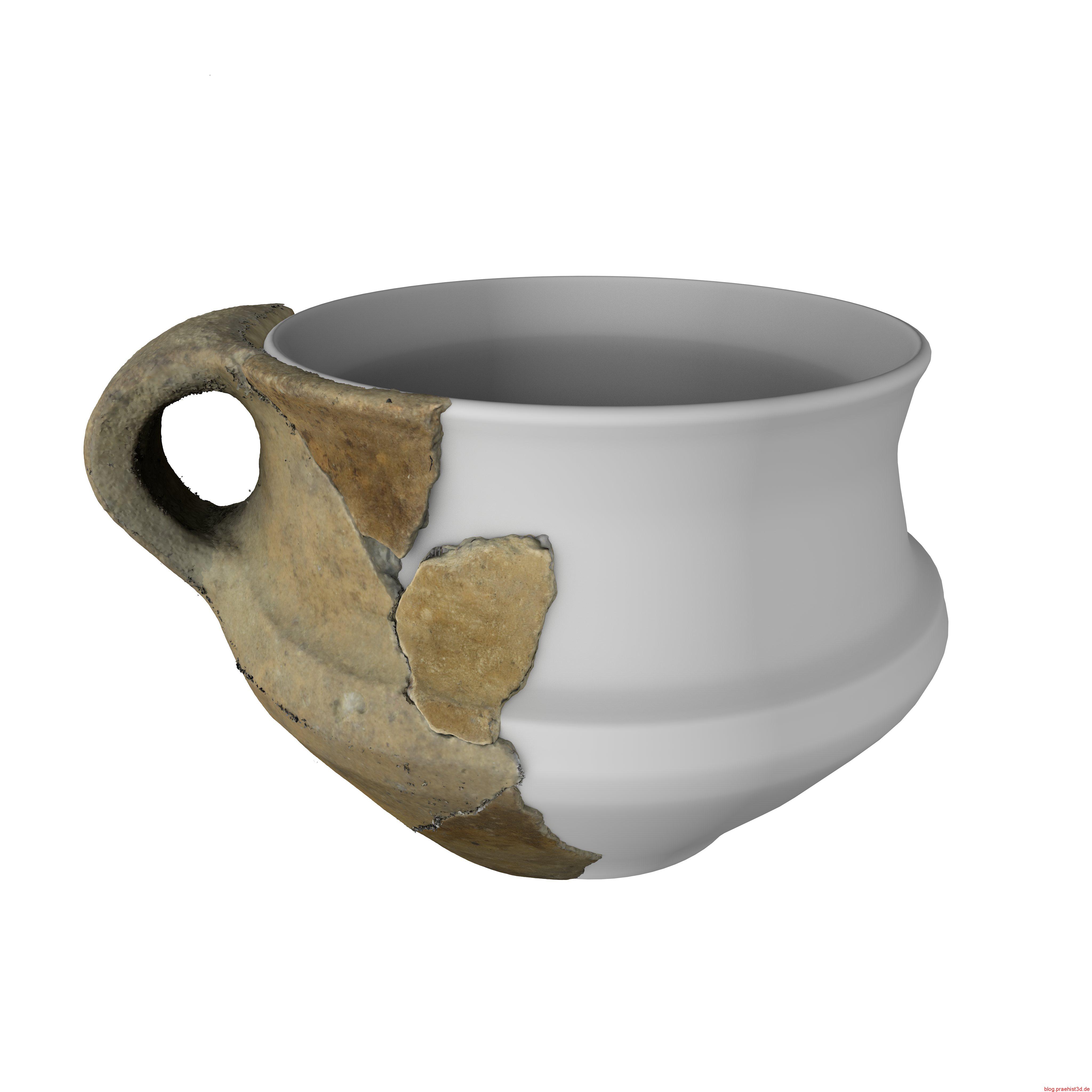
Using these parameters, I have added a possible appearance of the cup to the original archaeological material.
Clearly visible on this object is that, especially in the area of the handle, the shape of the mouth is more irregular than round. For better visibility of the break lines I have made the reconstructed object is a little smaller. The shards are so more easily viewed above the reconstructed vessel.
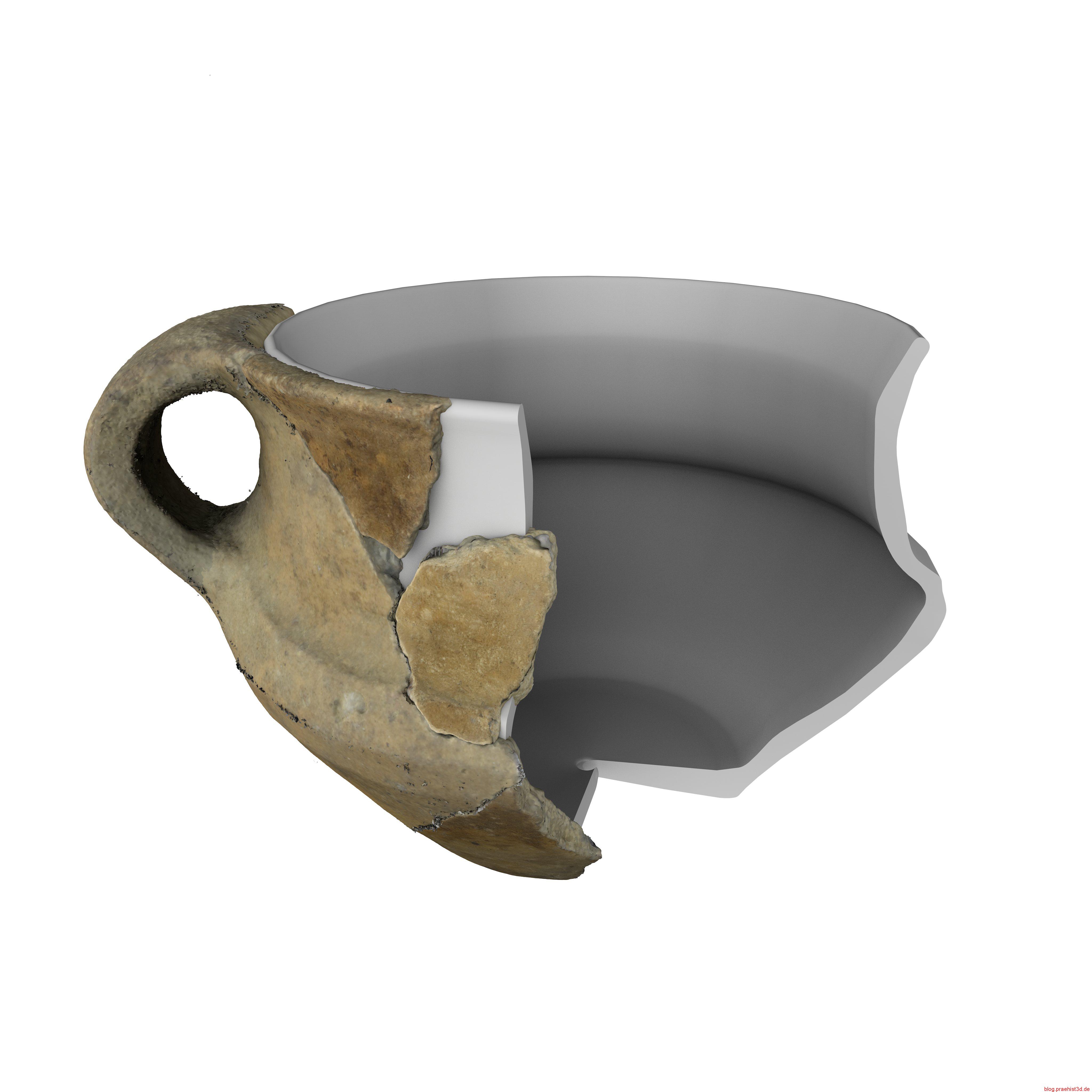
In a cut state, the profile of the cup is better visible. Just inside, the surface is apparently less well smoothed then the outer face. The flaw in the middle of the cup is a mistake on my part, and will be adjusted as soon as part III of the ceramic visualization appears here.
Animating conserved and reconstructed parts
The embedded video below is a first test rendering to attempt to better understand and view the conserved material versus the reconstructed parts in Blender.
As soon as I have redone the original data, I will focus on the scaling and volume calculation of archaeological ceramics. So I will publish some mathematical possibilities of virtual pots.
Until then, thank you for your attention.
Kontakt aufnehmen:
Haben Sie Interesse an 3D-Scans, Drucken, Rekonstruktionen, Workshops oder Fragen? Dann melden Sie sich!
